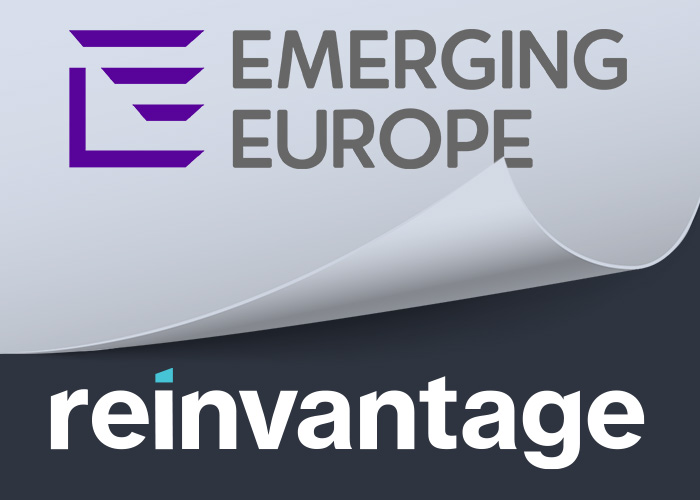Investment in R&D is the backbone of industrial innovation. In CEE, R&D spending varies widely between the various countries, creating a somewhat fragmented, uneven innovation landscape.
Central and Eastern Europe (CEE) has been a manufacturing powerhouse for decades, leveraging its strategic location, access to the EU market, and competitive labour costs to attract foreign direct investment (FDI).
- For makers of electric vehicles, emerging Europe is increasingly the place to be
- Stuck in neutral: Why EV chargers are missing from large parts of CEE
- Ukraine’s economy, like its people, resists
The region’s production lines have churned out cars, electronics, and machinery that power industries worldwide. However, as global manufacturing undergoes a seismic shift driven by automation and innovation, CEE must adapt or risk losing its edge.
A closer examination of research and development (R&D) spending, levels of automation, and sectoral performance across the region highlights the stark contrasts between frontrunners and laggards—and sheds light on what the future might hold for its manufacturing sector.
Fuelling innovation, unevenly
Investment in R&D is the backbone of industrial innovation. In CEE, R&D spending varies widely between the various countries, creating a somewhat fragmented, uneven innovation landscape.
Slovenia, the standout performer, allocated 2.2 per cent of its GDP to R&D in 2022, nearing the EU average of 2.27 per cent. This investment has fueled advancements in high-value industries, particularly pharmaceuticals and advanced manufacturing.
Czechia and Hungary also exhibit robust R&D activity, spending 1.95 per cent and 1.61 per cent of GDP, respectively. In these countries, government incentives, coupled with the presence of multinational corporations, have spurred research clusters in sectors such as automotive engineering and artificial intelligence.
Poland, the largest economy in the region, dedicates 1.4 per cent of GDP to R&D, reflecting its middle-of-the-road approach. While Warsaw is home to burgeoning tech hubs and innovation labs, smaller cities often struggle to attract comparable investment.
On the other end of the spectrum, Bulgaria and Romania spend less than one per cent of their GDP on R&D. Despite being EU members for 17 years, these countries continue to grapple with limited state funding and brain drain, with many scientists and engineers seeking opportunities abroad.
This chronic underinvestment in R&D puts them at risk of falling behind in the race for industrial innovation.
The automation gap
CEE’s automotive sector is a shining example of automation’s potential. Slovakia, with the highest per-capita car production in the world, has become a magnet for automakers like Volkswagen, Kia, and Stellantis.
Robotic assembly lines, integrated logistics systems, and predictive maintenance technologies are commonplace in Slovak factories, enabling them to meet high global standards.
Poland has also embraced automation in its booming electronics manufacturing sector. Plants producing semiconductors, home appliances, and batteries for electric vehicles have integrated Industry 4.0 technologies, ensuring quality and efficiency.
Czechia, too, is making strides in automating its industrial base, with a strong emphasis on precision engineering and robotics.
In contrast, Bulgaria and Romania lag in automation adoption. A 2023 report by the International Federation of Robotics found that Romania has just 18 industrial robots per 10,000 workers, well below the EU average of 129.
Bulgaria fares slightly better, with 30 robots per 10,000 workers. The low density of robots reflects structural challenges, including limited capital for investment, outdated infrastructure, and a workforce unprepared for the digital transition.
Traditional industries such as textiles and furniture manufacturing, prevalent in Bulgaria and Romania, also face slower adoption of automation due to the high costs of integrating technology into legacy systems. This leaves these sectors vulnerable to losing market share to competitors in Asia, where automation is advancing more rapidly.
Sectoral winners
The automotive industry remains the cornerstone of manufacturing in CEE, accounting for a significant share of exports in countries like Slovakia, Czechia, and Hungary. These nations have successfully integrated automation and R&D into their production ecosystems, enabling them to remain competitive even as labour costs rise.
Investments in electric vehicles (EVs) are also reshaping the region’s automotive sector. Poland, for instance, has attracted major battery manufacturers, positioning itself as a key player in the EV supply chain. This shift reflects not only the integration of advanced technologies but also a broader pivot towards sustainability.
Poland is also emerging as a leader in electronics, particularly in areas such as consumer electronics, medical devices, video games, and IT hardware. Automation has played a crucial role in this success, allowing Polish factories to meet global demand while maintaining high quality standards.
Challenges await
Despite pockets of success, the region faces several challenges in its quest for manufacturing excellence.
Automation requires a workforce skilled in robotics, software engineering, and data analytics. Many CEE countries, particularly those with lower R&D spending, face acute shortages of such talent. The migration of young, educated workers to Western Europe exacerbates the problem.
Outdated infrastructure also remains a bottleneck in several CEE countries, hindering the deployment of automation technologies. While EU structural funds have helped address some gaps, much remains to be done, particularly in rural areas.
While EU funds have been instrumental in supporting modernisation, not all countries have been equally effective in utilising these resources. Bulgaria and Romania, for instance, often face challenges in absorbing EU grants due to bureaucratic inefficiencies.
Inconsistent industrial policies across the region meanwhile create uncertainty for investors. Countries with robust incentives for R&D and automation, such as Hungary and Czechia, attract more investment, while others struggle to compete.
Opportunities for growth
To secure its place in the global manufacturing ecosystem, CEE must address these challenges head-on. Key opportunities include boosting R&D Investment, with governments prioritising R&D spending, particularly in lagging countries. Public-private partnerships can play a crucial role in bridging funding gaps and fostering innovation.
Accelerating workforce reskilling is also crucial, not least in areas decarbonising (areas where coal mining, for example, provided the majority of jobs).
Comprehensive education and training programmes are essential to equip workers with the skills needed for automated and high-tech manufacturing. Collaboration between governments, universities, and industries will be critical.
Greater collaboration between CEE countries could also help share best practices and resources, particularly in areas like robotics and AI development.
Then there’s green manufacturing. Sustainability is increasingly becoming a competitive advantage in global markets. By investing in green technologies and processes, CEE manufacturers can align with EU climate goals and attract eco-conscious investors.
Political will
While leaders like Slovenia, Slovakia, and Poland demonstrate the transformative potential of R&D and automation, lagging countries risk being left behind.
Addressing disparities in innovation, technology adoption, and workforce preparedness will be crucial for the region to thrive in an increasingly competitive global market.
CEE has the resources, talent, and strategic positioning to remain a manufacturing hub. The challenge lies in harnessing these strengths effectively, ensuring that progress is inclusive and sustainable.
Photo by Craig Sybert on Unsplash.
At Emerging Europe, we use an integrated approach centred around market intelligence to help organisations understand trends and strategically position themselves for success.
Learn how our solutions can help you thrive in the region:
Company and Services Overview | Strategic Advantage.


Add Comment